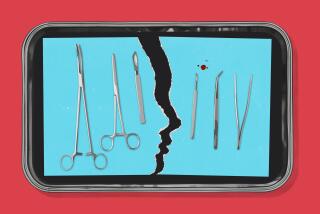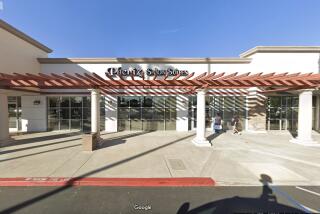Surgeon in China ‘grows’ nose on man’s forehead
Images of an expertly sculpted nose on a Chinese man’s forehead may be shocking to many, but plastic surgeons say the use of forehead tissue for nasal reconstructive surgery dates back thousands of years.
The practice of using flaps of tissue from both the forehead and cheek to reconstruct a severed nose was begun in ancient India, where facial disfigurement served as a form of punishment, according to Dr. Robert X. Murphy, president elect of the American Society of Plastic Surgeons.
“They were very far advanced in using the forehead skin to refashion a semblance of a nose,” Murphy said.
The Sushruta Samhita, a Sanskrit text, described the surgical tools, herbs and techniques necessary for nasal reconstructive surgery, and offered this bit of advice to practitioners: “Operation without trembling, fear, or doubt are always praiseworthy of the surgeon operating.”
The text is attributed to Sushruta, a physician who is believed to have lived about 600 BC.
In a paper on the historical impact of these Indian methods, lead author Dr. Larry Nichter, a plastic surgeon in Newport Beach, wrote that the basic techniques laid the foundation for modern plastic surgery.
The story and photos of the Chinese forehead nose has drawn gasps from many in the general public, particularly Westerners.
In the United States, plastic surgeons perform such reconstructive surgery in a single session. Cartilage taken from a patient’s rib and ear is used to build a foundation for the replacement nose. Next, a flap of skin cut from the forehead is folded down and over the cartilage to create a new nose.
In the China procedure, however, the plastic surgeon used a different method.
The surgeon used tissue expanders placed beneath forehead skin to stretch the flesh and create a “pocket” of skin. Next, the surgeon placed rib cartilage beneath the stretched flesh to shape a new nose that would later be “harvested” and placed in the position of the patient’s old nose, which was damaged in an auto accident.
The process probably took a period of weeks, and the actual replacement surgery has yet to occur.
Murphy said that while the replacement nose was expertly sculpted, he doubted that there would be a market for the technique in the United States.
“In the West we go at this in a different way, because not many people here would consider having a proboscis on the forehead,” Murphy said.
In the Western procedure, a patient is left with a flap of skin connecting the bridge of their nose and their eyebrow for roughly three weeks, after which bridging flesh is removed.
“I think that’s probably easier to deal with than having something sit on your forehead for weeks,” Murphy said.
While skin from other areas of the body, such as the arms and legs, can be used in reconstructive surgery, forehead tissue is preferred in nose reconstruction for a couple of reasons, Murphy said.
First, forehead skin is the closet match to the flesh found on a patient’s real nose. Skin taken from another party of the body may be thicker, have a different color, and have hair.
Second, by using forehead skin and keeping a portion of it intact for a short time -- that piece that connects the bridge of the nose and an eyebrow -- initial blood supply is maintained and chances for complications are reduced.
Murphy said he didn’t see any big advantages in the China procedure compared to conventional reconstruction methods here.
However, he said it did raise tantalizing possibilities for the future, when technology and the use of genetic materials such as stem cells has advanced.
“What would be exciting is to take precursor cells and grow them into a form that we want to use in reconstruction,” Murphy said.






